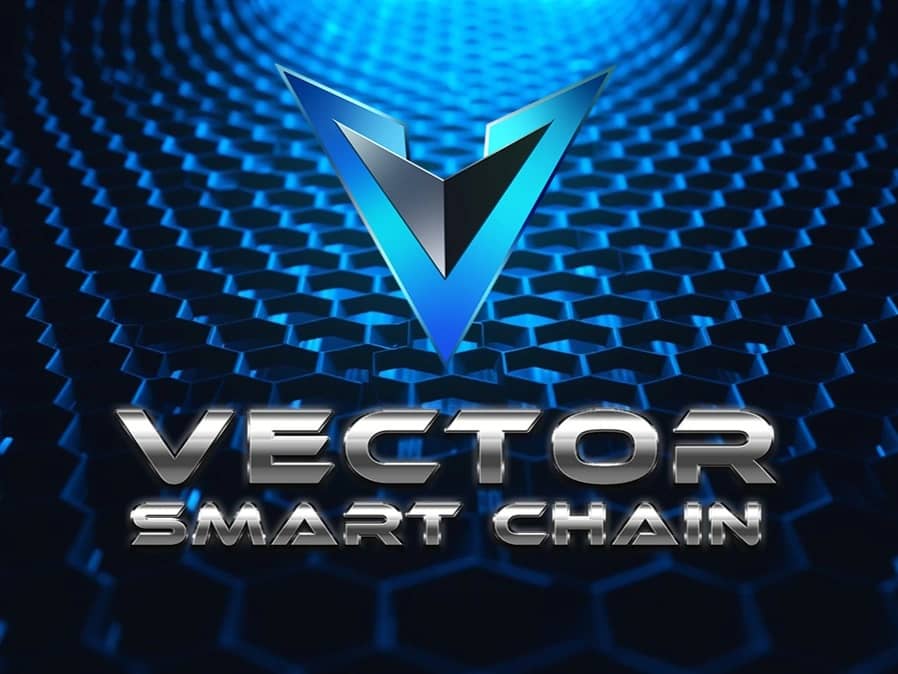Subscribe to wiki
Share wiki
Bookmark
Vector Smart Chain
Vector Smart Chain
Vector Smart Chain (VSC) is a Layer-1 blockchain designed to provide a high-performance, scalable, and developer-accessible environment for decentralized applications (dApps). It incorporates compatibility with both the Ethereum Virtual Machine (EVM) and the Cosmos ecosystem, aiming to offer a cost-effective infrastructure for Web3 development. [1]
Overview
Vector Smart Chain (VSC) is a Layer 1 blockchain that focuses on decentralized finance, enterprise applications, and real-world asset tokenization, with an emphasis on scalability, security, and low transaction costs. Its native token, Vector Smart Gas (VSG), initially launched on Ethereum and later migrated to VSC, powers transactions, smart contract execution, and network security. VSC emphasizes enterprise integration and decentralized physical infrastructure networks, enabling the seamless connection of digital systems with physical assets. Additionally, it provides developers with tools to build decentralized applications and protocols. [5]
Features
The VSC blockchain protocol underpins the VSG ecosystem, providing the infrastructure for decentralized applications, smart contracts, and digital asset transactions. It is designed around scalability, security, and interoperability, incorporating technologies such as sharding, Layer 2 solutions, and a hybrid consensus mechanism that combines Proof of Stake and Delegated Proof of Stake to balance efficiency with security.
A defining feature of the protocol is its flat $4 gas fee, which introduces predictable transaction costs regardless of network activity. Security is reinforced through smart contract audits, multi-signature verification, and real-time monitoring, alongside governance structures intended to maintain transparency and trust.
The protocol also emphasizes interoperability, supporting cross-chain communication with ecosystems such as Ethereum, Binance Smart Chain, Cosmos, and Solana. These combined elements enable higher transaction throughput, cost-effective operations, and integration with a range of decentralized finance platforms and digital asset services, positioning VSC as a scalable and reliable blockchain framework. [6]
Products
The Vector Smart Chain ecosystem includes several core products and tools designed to support developers and enhance user interaction with the network. These components provide foundational infrastructure for building, deploying, and monitoring applications on the chain.
- Block Explorer: A tool that provides transparency for all on-chain activity. Users and developers can use the explorer to view transactions, inspect blocks, verify smart contract code, and track wallet balances and token transfers. [7]
- VSC Dashboard: A network analytics platform that offers insights into the overall health and performance of the blockchain. The dashboard typically displays key metrics such as transaction volume, average block time, active addresses, and other relevant network statistics. [8]
- Token Launchpad: A native platform designed to help new projects launch their tokens on the Vector Smart Chain. The launchpad provides infrastructure for initial token offerings, presales, and liquidity generation events, aiming to foster the growth of new projects within the ecosystem. [9]
- VSC DEX: A native decentralized exchange that facilitates the trading of digital assets on the Vector Smart Chain. It allows users to swap tokens, provide liquidity to pools, and engage in other DeFi activities in a non-custodial manner. [10]
- VSC Developer Guide: A comprehensive resource for developers looking to build on the network. The guide includes documentation, tutorials, and instructions for deploying smart contracts and building dApps using standard industry tools compatible with the EVM. [5]
Governance
The VSC blockchain protocol uses a Decentralized Autonomous Organization (DAO) as its governance model, giving token holders the ability to influence the protocol’s direction. Governance is managed through smart contracts, which automate processes such as submitting proposals, voting, and executing approved changes, eliminating the need for centralized oversight. Token holders participate by casting votes proportional to their holdings, and all activities are recorded on-chain to ensure transparency and accountability.
The governance process begins with community members submitting proposals, which then undergo open discussion before moving to a voting phase. Approved proposals are automatically executed via smart contracts. The system emphasizes decentralization by distributing decision-making power across stakeholders, inclusivity by allowing all token holders to participate, and adaptability by enabling governance structures to evolve with the ecosystem’s needs. This framework is designed to foster transparent, collaborative, and resilient governance for the VSC community. [11]
VSG
The VSG token was first launched on Ethereum as an ERC-20 asset and is transitioning to Vector Smart Chain, where it will function as the primary utility and gas token. On VSC, it will facilitate transactions, power smart contracts, and support decentralized applications, while also serving as the backbone of the network’s operations. VSG has a total supply of 10B tokens.
A key feature of VSG is its hyper-deflationary model, in which a portion of transaction fees is allocated to a buy-and-burn program that reduces the total supply over time. The token is designed to operate within a governance structure supported by a decentralized autonomous organization, alongside mechanisms intended to strengthen network security and sustainability.
Additional elements tied to VSG include the use of a hybrid consensus mechanism to balance scalability and security, integration of advanced fraud detection and third-party audits, and reliance on scalability measures such as sharding and Layer 2 solutions to improve network performance. [12] [13]
Hyper-Deflationary Model
The VSC blockchain protocol incorporates a hyper-deflationary mechanism designed to reduce the supply of VSG tokens over time. This mechanism combines transaction fee burning, where a portion of each transaction fee is permanently removed from circulation, with an automatic buyback and burn system that repurchases tokens from the market and eliminates them. Together, these processes gradually decrease the total token supply in a structured and transparent way.
The design aims to create scarcity, which may influence the long-term value of VSG tokens, while also encouraging holding and continued use within the ecosystem. By embedding predictable rules for supply reduction, the model seeks to contribute to stability and sustained engagement from token holders, who are further encouraged to participate in governance and decision-making around the protocol’s development. [14]
Partnerships
See something wrong?
